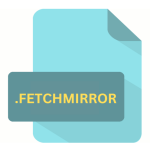.CKD File Extension

UbiArt Framework Cooked Asset
| Developer | Ubisoft |
| Popularity | |
| Category | Game Files |
| Format | .CKD |
| Cross Platform | Update Soon |
What is an CKD file?
In the realm of digital content creation, file extensions often serve as gateways to the intricate worlds crafted by developers and designers. One such enigmatic extension is .CKD, synonymous with UbiArt Framework Cooked Assets.
These files hold the essence of virtual universes, encapsulating the creativity and technical prowess of their creators. In this article, we embark on a journey to unravel the mysteries surrounding .CKD files, exploring their origin, evolution, structure, and utility.
More Information.
.UbiArt Framework was first introduced in 2010 with the release of “Rayman Origins,” a critically acclaimed platformer renowned for its vibrant visuals and fluid animation.
The framework revolutionized the game development process by enabling artists to directly translate their creative visions into interactive experiences. .CKD files played a pivotal role in this revolution, streamlining asset management and optimizing runtime performance.
Origin Of This File.
The genesis of .CKD files can be traced back to the UbiArt Framework, a versatile game engine developed by Ubisoft. Originally conceived as a tool to empower artists and designers, the UbiArt Framework facilitated the creation of visually stunning 2D and 2.5D games.
.CKD files emerged as integral components within this ecosystem, serving as containers for preprocessed game assets.
File Structure Technical Specification.
.CKD files are structured containers that house various types of game assets, including sprites, textures, animations, audio clips, and metadata.
The internal structure of these files is intricately organized to facilitate efficient retrieval and processing during runtime. While the specific layout may vary depending on the game engine version and customization, .CKD files typically adhere to a standardized format defined by the UbiArt Framework SDK.
How to Convert the File?
Converting .CKD files to other formats or extracting their contents often requires specialized tools and a certain level of technical expertise. Here’s a general guide on how you can approach converting .CKD files:
1. Utilize Third-Party Tools:
There are various third-party extraction tools available that can help you convert .CKD files or extract their contents. These tools are often developed by the gaming community and enthusiasts who reverse-engineer file formats. Examples of such tools include:
- CKD Explorer: This is a dedicated tool designed specifically for exploring and extracting content from .CKD files. It provides a user-friendly interface for browsing through the assets contained within the file and extracting them to a desired location on your system.
- UbiArt Asset Extractor: Another tool commonly used for extracting assets from .CKD files. It may offer additional features or customization options compared to CKD Explorer, depending on the developer’s implementation.
2. Command-Line Utilities:
For more advanced users comfortable with command-line interfaces, there are command-line utilities available that can automate the extraction process. These utilities typically require you to specify the .CKD file as input and provide options for extracting specific types of assets or all assets contained within the file.
3. Custom Scripts:
If you have programming skills, you can develop custom scripts or programs to parse .CKD files and extract their contents. This approach offers flexibility and control over the extraction process, allowing you to tailor it to your specific requirements. However, it requires a deeper understanding of the .CKD file format and may involve more effort compared to using existing tools.
4. Cross-Platform Solutions:
Look for cross-platform solutions that are compatible with multiple operating systems. Tools like CKD Explorer or UbiArt Asset Extractor may have versions or alternatives that can run on Windows, Linux, and macOS using emulation or compatibility layers such as Wine.
5. Online Communities and Forums:
Engage with online communities, forums, or discussion boards dedicated to game modding, reverse engineering, or UbiArt Framework development. These communities often have knowledgeable members who can provide guidance, share tools, or even collaborate on developing new solutions for .CKD file conversion and extraction.
6. Developer Documentation and SDKs:
Check if there are official or unofficial developer documentation and software development kits (SDKs) available for the UbiArt Framework. These resources may include information on the .CKD file format, APIs for accessing and manipulating assets, and sample code demonstrating extraction techniques.
7. Experimentation and Trial-and-Error:
Finally, be prepared for some experimentation and trial-and-error, especially if dealing with proprietary or undocumented file formats like .CKD. Sometimes, the most effective approach involves exploring the file structure, testing different extraction methods, and learning from the insights gained through the process.
Advantages And Disadvantages.
The utilization of .CKD files offers several advantages to game developers and content creators. Firstly, they streamline the asset management process, allowing for centralized storage and easy retrieval of game resources.
.CKD files support asset compression and optimization techniques, enhancing runtime performance and reducing memory footprint. However, the proprietary nature of .CKD files can pose challenges for modders and enthusiasts seeking to modify or extract content from games developed using the UbiArt Framework.
How to Open CKD?
Open In Windows
- Download and install extraction tools like CKD Explorer or UbiArt Asset Extractor on your Windows system.
- Open the extraction tool and navigate to the location of the .CKD file.
- Use the tool’s interface to explore the contents of the .CKD file and extract the desired assets.
Open In Linux
- Install Wine, a compatibility layer that allows running Windows applications on Linux.
- Download and install a Windows-based extraction tool like CKD Explorer or UbiArt Asset Extractor.
- Run the extraction tool using Wine and follow the same steps as in Windows to open and extract .CKD files.
Open In MAC
- Similar to Linux, use Wine or virtualization software like Parallels Desktop or VMware Fusion to run Windows-based extraction tools on macOS.
- Install a compatible extraction tool and follow the steps outlined for Windows to open and extract .CKD files.
Open In Android
- Look for custom applications developed specifically for Android devices that offer .CKD file extraction capabilities.
- These applications may be available on third-party app stores or forums dedicated to Android development and modding.
- Once installed, use the app’s interface to open .CKD files and extract their contents.
Open In IOS
- Explore the App Store for iOS applications designed for .CKD file manipulation, if available.
- Alternatively, consider developing a custom application tailored for iOS devices that can handle .CKD files.
- Ensure compliance with Apple’s App Store guidelines and restrictions when distributing or developing such applications.
Open in Others
- Investigate platform-specific SDKs, libraries, or tools that may offer .CKD file support for other operating systems.
- Engage with developer communities and forums to discover potential solutions or collaborate on developing cross-platform tools for opening .CKD files.
- Experiment with alternative approaches, such as using emulators, virtual machines, or compatibility layers, to run extraction tools on unsupported platforms.













